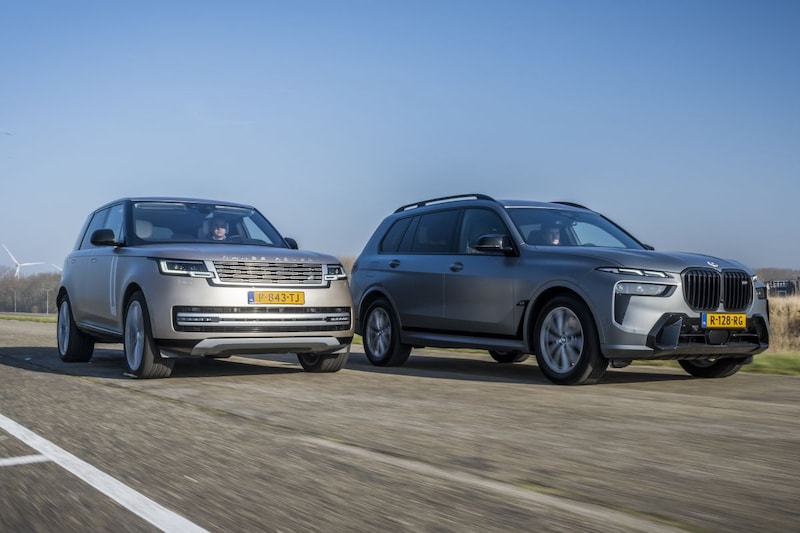
I watched episode three of the Human series on NPO2 with interest What’s stopping us? Presenter Jeroen Smit examines the difficult course of the transition to a healthier and cleaner, better-designed world. This time it was about the SUV and the question of how we could restrain that fat thing.
Good question. I would rather lose the SUV than be rich and wrote a fierce opinion piece about it four years ago. That’s right, I wrote compliments about an SUV more than once. I always take my hat off to a well-made product, suv or no suv. But a concept is no good if it can be so much smarter, more efficient and more compact in energy-critical times. I wrote: “Ordinary and exhibitionistic drunkards they are, an unacceptable waste of steel, space and fossil fuels.”
In that spirit, Smit and his sidekicks Daphné Dupont-Nivet and Jaap Tielbeke have now concluded after research that the SUV negates the CO2 reductions achieved with EVs. According to Smit, it emits an average of 10 to 15% more CO2 than an average petrol car. That is more or less in line with my findings and perhaps in bitter practice it is a degree worse. In my tests, SUVs typically consume 20 to 25 percent more fuel than comparable passenger cars with the same powertrain. With BMW’s great two-liter diesel you get 1 in 14 in the X3, in the 3-series 1 in 18. With the Toyota RAV4 Hybrid I drove 1 in 16, with the identically motorized Camry Hybrid 1 in 20. That difference is unacceptable large, especially when the added value of the SUV turns out to be nil in practice. Often they don’t even have four-wheel drive, so you can no longer call them off-road vehicles despite their tough looks. Their space gain compared to ordinary stations is small to limited, and with their fat bodies they take up an absurd amount of space.
I make a partly motivable, partly hypocritical exception for the Range Rover in which Smit drives around with a wink. It is called a gas guzzler and it is just not that in its genre. Nor is it a cowardly SUV, but a real all-terrain vehicle that is capable of improbable deeds in mud pits, mountains and deserts, and the enthusiast in me enjoys that pointless entertainment to the fullest. Moreover, consumption is relatively low at Land Rover. I drove the mild hybrid to 1 in 13.1, quite impressive for such a giant, the now launched plugin version has an electric range of 90 kilometers per hour plus a fast charger. It is evident that the electrical components drive up the weights. But except during your holidays, you can drive it fully electrically with some caution. And next year the electric variant will come. Problem solved.
Not quite, says Auke Hoekstra of Eindhoven University of Technology in the broadcast. Many more raw materials are also needed for large plug-in cars, Hoekstra says correctly. He receives unexpected support from Renault CEO Luca de Meo, who, in conversation with Smit in Paris, characterizes an EV with a 100 kWh battery as an ‘ecological monster’. Probably also because he does not have it in the showroom himself, because as the boss of his group he limps on two legs, he admits with charming armor. On the one hand, he wants to be able to continue to offer affordable cars, and on the other hand, he wants to keep shareholders happy. And you earn more on big SUVs than on a small one.
You wish, says a researcher from TNO, that there was more focus on fuel-efficient cars. That also saves weight, he knows, and the enormous increase in weight of cars in recent years is liquidating the consumption gains of the more efficient engines.
De Meo also struggles with that. We grew up with affordable cars, he says Smit. He wants to go back to the roots. “You don’t need two tons of plastic and steel to transport 80 or 150 kilos of people. That is super inefficient.” We must, he says, regain the balance. “But all regulations encourage us to upgrade our offer.” SUVs are much more cost effective.
So yes, let’s turn that tide as soon as possible. Smit should soon dedicate another broadcast to the stumbling blocks for that compact, affordable car of the future. If it comes to that, I will be happy to cooperate (for this broadcast I said no, that’s why). I already wrote for Autoweek about BMW’s brilliant Vision Circular. We have the key questions. Why is it costing Tesla to VW so much precious time to bring their promised small mid-sized cars to market? What technological and logistical complications are there? And how do we keep production costs under control? Could we not realize a test design for the perfect small electric Volkswagen car in consultation with a few nice young designers and technicians? Spacious, elegant, efficient, as simple as possible?
That’s what it should be about, and that remained the missing link in Smit’s story. For the existing target groups in A-e. B segment, no manufacturer is now building a full-fledged EV. They are simply too expensive. I have an early attempt at such a car, the BMW i3. Small, light, super stiff and durable thanks to the use of very expensive materials such as carbon and aluminum. That drove the price to ridiculous heights for such a flea. Catalog value over half a ton, for an electric city car with a range of 300 kilometers. And I hear whispers that BMW still suffered a loss.
Do you now understand why not only the undersigned is skeptical about VW’s promise to market the Polo-like EV just unveiled in Hamburg in 2025 for less than 25 grand?
Food for thought.
– Thanks for information from Autoweek.nl